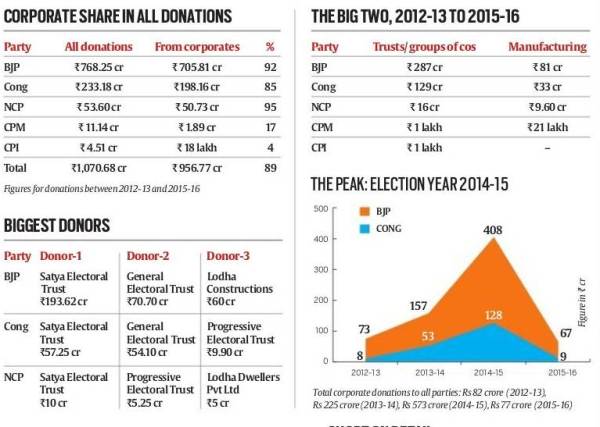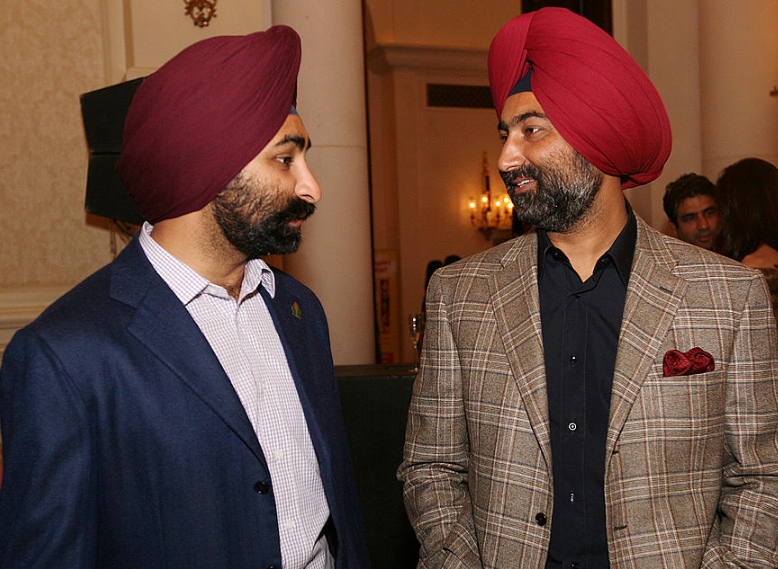ADR India via googlegroups.com
Attachments16:13 (28 minutes ago)
to national-ew-ne., national-elect.
Dear Friends,
Association for Democratic Reforms (ADR) and National Election Watch have analyzed 4852 out 4896 election affidavits of current MPs and MLAs. It includes 774 out of 776 affidavits of MPs and 4078 out of 4120 MLAs from all the states of India.
Highlights
Out of 1581(33%) MPs/ MLAs analysed with declared criminal cases, 51 have declared cases related to crimes against women.
Among these 51 MPs/MLAs with declared cases related to Crimes s against women, 48 are MLAs and 3 are MPs.
334 candidates analysed who had declared cases related to crimes against women, were given tickets by recoginized political parties.
122 independent candidates analysed with declared cases related to crimes against women had contested for Lok/Rajya and state assembles’ elections in last 5 years.
Among these candidates, 40 candidates were given tickets by parties for Lok Sabha / Rajya Sabha elections. Various recognized parties have given tickets to 294 candidates with cases related to crimes against women for state assemblies’ elections.
In the last 5 years, 19 independent candidates with declared cases related to crimes against women contested in the Lok Sabha/ Rajya Elections. Similarly, 103 independent candidates with declared cases related to crimes against women contested in the state assemblies’ elections.
· Among the states, Maharashtra has the highest number of MPs/ MLAs i.e. 12, followed by West Bengal with 11 and Odisha with 6 MPs/MLAs who have declared cases related crimes against women.
· Among the states in the last 5 years, Maharashtra has the highest number of candidates i.e. 65, followed by Bihar with 62 and West Bengal with 52 candidates who were given tickets by political parties even though they have declared cases related to crimes against women in their affidavits.
· Among various recognized parties, BJP has the highest number of MPs/ MLAs i.e. 14, followed by SHS (Shiv Sena) with 7 and AITC (All India Trinamool Congress) with 6 MPs/MLAs who have declared cases related crimes against women.
· Among the major parties in the last 5 years, 48 candidates with declared cases related to crimes against women were given tickets by BJP. The second highest number of candidates, i.e. 36 who had declared cases related to crimes against women were given tickets by BSP, followed by 27 candidates from INC who had declared cases related to crimes against women who had contested for Lok/Rajya Sabha and State Assemblies Elections in last 5 years.
· Following are 4 MLAs who have declared have declared cases related to rape :
§ Gonuguntla Suryanarayana from TDP who has won from Dharmavaram constituency in Andhra Pradesh (2014)
§ Subal Sahu from INC who has won from Bijepur constituency in Odisha(2014)
§ Jethabhai G.Ahir from BJP who has won from Shehra constituency in Gujarat (2012)
§ Gulab Yadav from RJD who has won from Jhanjharpur constituency in Bihar(2015)
· In the last 5 years, recognized parties have given tickets to 29 candidates who had declared cases related to rape.
· In the last 5 years, 14 independent candidates with declared cases related to rape have contested for Lok/Rajya Sabha and State assemblies’ elections.
Recommedations
All major political parties give tickets to candidates with cases of crimes against women especially rape and therefore hindering the safety and dignity of women as citizens. These are serious cases where charges have been framed and cognizance have been taken by the courts. Hence, political parties have been in a way abetting to circumstances that lead to such events that they so easily but vehemently condemn in Parliament’. ADR and NEW strongly recommends that:
· Candidates with a criminal background should be debarred from contesting elections.
· Political parties should disclose the criteria on which candidates are given tickets.
Cases against MPs and MLAs should be fast tracked and decided upon in a time bound manner.
For more information please visit: https://adrindia.org/content/analysis-mpsmlas-declared-cases-related-crimes-against-women
Thanks & Regards
Media and Journalist Helpline
+91 80103 94248
Email: adr@adrindia.org
Maj.Gen. Anil Verma (Retd)
Head
National Election Watch,
Association for Democratic Reforms
011 4165 4200,
+91 88264 79910
adr@adrIndia.org,
anilverma@adrindia.org
Prof Jagdeep Chhokar
IIM Ahmedabad (Retd.)
Founder Member,
National Election Watch, Association for Democratic
Reforms
+91 99996 20944
jchhokar@gmail.com
Prof Trilochan Sastry
IIM Bangalore
Founder Member,
National Election Watch,
Association for Democratic Reforms
+91 94483 53285
trilochans@iimb.ernet.in
--
Association for Democratic Reforms
T-95, C.L. House, 2nd Floor,
(Near Gulmohar Commercial Complex)
Gautam Nagar
New Delhi-110 049
M: +91 8010394248
T: +91 11 41654200
F: 011 4609 4248
Web:
myneta.info
adrindia.org
Find ADR on Facebook
Lucknow: Principals of three government medical colleges in Uttar Pradesh have offered to quit, citing “sorry state of affairs” in the state’s medical education department. “Many more are contemplating quitting, citing lack of infrastructure and poor working condition in the department, which has not had a permanent director general in the past 23 years,” said a highly-placed source.
Of the 14 medical colleges in the state, just five have permanent principals — Allahabad, Saharanpur, Kanpur, Badaun and Orai.
The resignations assume significance following nationwide outrage over the death of 30 children within 48 hours in the state-run BRD Medical College Hospital in Gorakhpur, and subsequent suspension of officiating principal Dr Rajiv Mishra. Even his successor, Dr P K Singh is holding an additional charge.
The three principals who have expressed their desire to quit are Saharanpur Medical College principal Anand Swarup, Jhansi Medical College’s N Sengar and Agra Medical College’s Saroj Singh.
Theyhave offered to quit, blaming poor working conditions, “favouritism in appointments” and “shady state of affairs” in the medical education department.
“I have applied for the VRS. I cannot work under the present condition. Despite being the senior-most principal, I have been denied the opportunity to become the director general, while juniors have been favoured,” Dr Swarup told TOI on Friday. “I don’t want to do the administrative job anymore,” said Dr Senger. He applied for VRS on May 16, well before tragedy struck BRD Medical College Hospital on August 10. His move clearly suggests that his decision is not triggered by the Gorakhpur tragedy and that he has been frustrated with the functioning of the department for a while.
The resignations assume significance following nationwide outrage over the death of 30 children within 48 hours in the state-run BRD Medical College Hospital in Gorakhpur.






